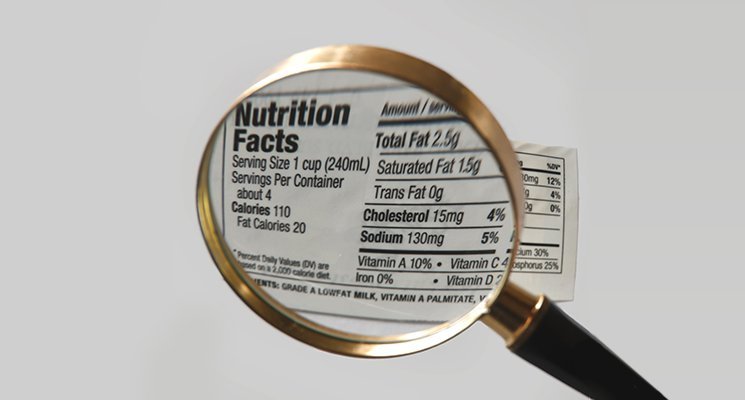Have you heard the latest? Snacking is good for you. Not food snacking—exercise snacking. Researchers in New Zealand recently conducted a study that showed that multiple, brief portions of exercise in a single day—“exercise snacks,” the researchers dubbed them—may control blood sugar better than a single, continuous workout. The study was conducted on men and women with insulin resistance, a common precursor of Type 2 diabetes. Though, the news is relevant to anyone who wants to stay healthy by keeping blood sugar under control. In the study, participants who exercised for 12 minutes before breakfast, 12 before lunch, and 12 before dinner had far lower blood-sugar levels after dinner than those who exercised only once in a day, for 30 minutes before dinner. They also kept their blood-sugar levels lower for longer—over 24 hours as opposed to less than a day.
What does this mean for health clubs, gyms, fitness centres, and exercise boutiques? Well, you need to be prepared to serve members and clients who are looking to get to your facility three times a day. Also, if you want to help your members and clients reach their health-related goals (and you do, because their success is your success), you should probably think about how to encourage those who aren’t necessarily looking to get there three times a day to do so — and, let’s face it, many of them most likely struggle to get there once a day. Scientists have long argued that shorter, more frequent bursts of exercise are more beneficial than long, continuous spells. As the body of research supporting this hypothesis grows, more and more people will be demanding — and needing — to fit this new way of working out into their daily routines. This is especially true because, as researchers of the New Zealand study discovered, the blood-sugar benefits (and it remains to be seen which other benefits) are strongest when the exercise snacks consist of high intensity interval training. For most people, such training is much easier to do at a facility, with trainers and functional fitness equipment, than at home.
Here are a few ideas to consider:
1) Create a new three-times-a-day program. First, be sure to spread the word about the findings of the New Zealand study (and other studies that show the benefits of exercise snacking). Then, establish a structured program to help people get started. Designate a core group of trainers to work with the three-times-a-day-ers: They’ll have to work hard to motivate their clients to come before breakfast, lunch, and dinner. At the same time, they’ll need to plan out careful twelve-minute exercise sessions, preferably high-intensity interval routines.
2) Everything’s easier with incentives. What discounts, rewards, or deals can you offer your members for trying out a new three-times-a-day program? Can you provide a day pass that will allow them fast-track entry each time, or a free smoothie from the juice bar after they complete their third workout? Can you give a free month to members who manage to make it to your facility three times a day, three days a week, for one month? Or maybe you can offer a month at half price for anyone who comes in three times a day with a friend at least twice in one month. The possible variations are limited only by your imagination.
3) If your facility has the capacity to serve food, consider providing three-times-a-day-ers with vouchers for at least one meal on their exercise days. This might make it easier for them to contemplate the logistics of coming to and leaving your facility three times in one day. They might, for example, come before breakfast, head to work, come before lunch and then stay and have lunch, and come again before dinner.
4) If it’s feasible, consider offering three-times-a-day classes in a couple of satellite locations in addition to your facility (maybe there’s an empty warehouse somewhere on the other side of town?). That way, members who live or work further away from your facility have a choice in where to go, and choices make for convenience.
As the trend increases and the demand for facilities to accommodate for more frequent, briefer sessions grows, health clubs and other fitness venues will learn what works and what doesn’t. Now is the time to get started — put yourself at the forefront of the exercise snack trend, and you’ll find yourself the leader of a pack before long.





 “The quality of any club’s performance is directly related to how the employees are treated every day.” That’s Bill Brackman, Sports Manager of the Oak Hill Country Club in Rochester, NY, responding to a question posed recently on the International Health, Racquet and Sports Club Association’s (IHRSA) blog. The question? How do you let employees know they are valued?
“The quality of any club’s performance is directly related to how the employees are treated every day.” That’s Bill Brackman, Sports Manager of the Oak Hill Country Club in Rochester, NY, responding to a question posed recently on the International Health, Racquet and Sports Club Association’s (IHRSA) blog. The question? How do you let employees know they are valued?
 “How are we going to make the women happy in this club?” That’s the question health clubs and similar facilities should be asking themselves says Bridget Brennan, author of the book Why She Buys; founder and CEO of Female Factor, a Chicago-based consulting firm that specializes in marketing to women; and keynote speaker at the 2013 Club Industry Conference and Exposition later this week. According to Brennan, women drive 70 to 80 percent of consumer spending worldwide. If they’re not spending the money themselves, she says, then they’re influencing or vetoing someone else’s decision to spend it. Either way, women tend to spread the word: “[They] are the drivers of word-of-mouth publicity,” Brennan explained to Club Industry.
“How are we going to make the women happy in this club?” That’s the question health clubs and similar facilities should be asking themselves says Bridget Brennan, author of the book Why She Buys; founder and CEO of Female Factor, a Chicago-based consulting firm that specializes in marketing to women; and keynote speaker at the 2013 Club Industry Conference and Exposition later this week. According to Brennan, women drive 70 to 80 percent of consumer spending worldwide. If they’re not spending the money themselves, she says, then they’re influencing or vetoing someone else’s decision to spend it. Either way, women tend to spread the word: “[They] are the drivers of word-of-mouth publicity,” Brennan explained to Club Industry.
 In New York City, it’s common for schools to raise funds by holding yearly auctions. In the months leading up to an auction, parents stump all around town, trying to win donations from local businesses so auction attendees will have a wide variety of items on which to bid. Common donations include free piano lessons, handmade jewelry, restaurant gift certificates — and month-long gym memberships.
In New York City, it’s common for schools to raise funds by holding yearly auctions. In the months leading up to an auction, parents stump all around town, trying to win donations from local businesses so auction attendees will have a wide variety of items on which to bid. Common donations include free piano lessons, handmade jewelry, restaurant gift certificates — and month-long gym memberships.
 I love my gym. I do not, however, love my gym’s yoga offerings. The first time I went to one of its (few) yoga classes, I left with a longing for the studio I used to live near, where I’d gotten into the habit of attending daily classes. It was a struggle to fit the classes in to my busy schedule, but I loved the instructors, who had studied and taught nothing but yoga for years and who could even make me chant without feeling phony or self-conscious. I loved the wide, airy room, with candles and overgrown plants on the windowsills and a giant Buddha statue near the entryway. I loved the long, green, silky curtains that billowed out when a breeze came in through the open windows — it was the perfect space, with the perfect people, for a practice dedicated to awareness of the mind/body connection.
I love my gym. I do not, however, love my gym’s yoga offerings. The first time I went to one of its (few) yoga classes, I left with a longing for the studio I used to live near, where I’d gotten into the habit of attending daily classes. It was a struggle to fit the classes in to my busy schedule, but I loved the instructors, who had studied and taught nothing but yoga for years and who could even make me chant without feeling phony or self-conscious. I loved the wide, airy room, with candles and overgrown plants on the windowsills and a giant Buddha statue near the entryway. I loved the long, green, silky curtains that billowed out when a breeze came in through the open windows — it was the perfect space, with the perfect people, for a practice dedicated to awareness of the mind/body connection.
 This summer, I was fortunate to get to spend some time at California’s Joshua Tree National Park. One morning, I got up early to view the sunrise from atop a boulder in the park. At 4:45 a.m., I was wearing jeans and a sweatshirt; by 7:30 a.m., my sweatshirt had been abandoned, I’d donned a wide-brimmed hat, and I felt like my jeans were on fire. What’s more, I needed a long swig of water every fifteen minutes or so.
This summer, I was fortunate to get to spend some time at California’s Joshua Tree National Park. One morning, I got up early to view the sunrise from atop a boulder in the park. At 4:45 a.m., I was wearing jeans and a sweatshirt; by 7:30 a.m., my sweatshirt had been abandoned, I’d donned a wide-brimmed hat, and I felt like my jeans were on fire. What’s more, I needed a long swig of water every fifteen minutes or so.
 In a recent post on the International Health, Racquet, and Sportsclub Association (IHRSA) blog, fitness consultant Michael R. Mantell discussed “the 4 S’s” of membership retention. To keep members — and keep them happy — you have to pay attention to four things that begin with the letter S, Mantell says: Social, Success, Sensitive, and Science. Three of these are pretty intuitive: For the “Social” element, you have to have a friendly, well-trained staff; for “Success,” you have to find ways to motivate your members toward meeting their own goals; for “Science,” you have to pay attention to new advances in technology and how the rest of the fitness world is putting them to use. But what’s this about “Sensitive”? What does being sensitive have to do with running a gym and keeping membership retention high?
In a recent post on the International Health, Racquet, and Sportsclub Association (IHRSA) blog, fitness consultant Michael R. Mantell discussed “the 4 S’s” of membership retention. To keep members — and keep them happy — you have to pay attention to four things that begin with the letter S, Mantell says: Social, Success, Sensitive, and Science. Three of these are pretty intuitive: For the “Social” element, you have to have a friendly, well-trained staff; for “Success,” you have to find ways to motivate your members toward meeting their own goals; for “Science,” you have to pay attention to new advances in technology and how the rest of the fitness world is putting them to use. But what’s this about “Sensitive”? What does being sensitive have to do with running a gym and keeping membership retention high?